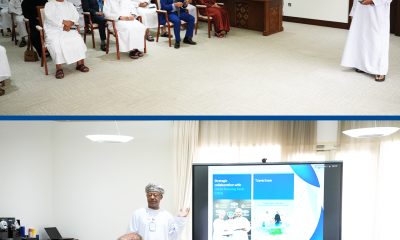Highlights
Iran fiscally and structurally well placed for international re-emergence: Moody’s
Iran (unrated) has significant economic growth potential, and structural reforms have helped strengthen its fiscal foundation, Moody’s Investors Service has said in a report published today.

Iran (unrated) has significant economic growth potential, and structural reforms have helped strengthen its fiscal foundation, Moody’s Investors Service has said in a report published today.
Moody’s report, entitled “Sovereign Credit Profile Set to Improve in Aftermath of Sanctions” is available on www.moodys.com. Moody’s subscribers can access this report via the link provided at the end of this press release.
“Sanctions relief will grant Iran access to an estimated USD150 billion in frozen foreign assets. We project the resulting implementation of investment plans, as well as a recovery in oil production, to contribute to higher GDP growth of 5% in 2016-17”, says Atsi Sheth, an Associate Managing Director at Moody’s.
Iran’s USD417 billion economy, the second largest in the Middle East after Saudi Arabia (Aa3 stable), is more diversified than other regional oil exporters. Nevertheless, Moody’s expects the removal of oil-related sanctions to result in an investment inflow, which will help revive the country’s ageing oil infrastructure. According to Iran’s Finance Minister, the country will need USD90 billion annually in external financing to meet its 8% economic growth target.
“International sanctions meant that Iran had to adapt to the reality of lower oil revenues and implement structural reforms much earlier than other oil-exporters. Most other oil-dependent sovereigns are only just beginning to consider structural fiscal reform,” Ms Sheth adds.
Iran’s capital and financial accounts remain resilient to external shocks. Iran’s exposure to the capital flow volatility, which many emerging market economies are undergoing as a result of the US Federal interest rate hike, is negligible.
However, Iran’s key credit driver remains political, in particular whether it will continue to meet its obligations under the recent agreement, and whether other countries will continue to agree that it has done so.
The rating agency’s report is an update to the markets and does not constitute a rating action.
-

 Alamaliktistaad Magazines2 months ago
Alamaliktistaad Magazines2 months agoAlam Al Iktisaad – September 2025 Edition
-

 News2 months ago
News2 months agoKitchenomiKs Secures Investment of US$3.2M Led by Jasoor Ventures
-

 Banking & Finance2 months ago
Banking & Finance2 months agoOman Arab Bank Highlights Its Ongoing Strategic Initiatives and Future Plans
-

 News2 months ago
News2 months agoIEA Expects Global Oil Market to Remain Oversupplied in 2026
-

 Energy2 months ago
Energy2 months agoWLGA Middle East LPG Summit & Expo 2025 to be held at OCEC on November 10 and 11
-

 Real Estate2 months ago
Real Estate2 months agoAl Mouj Muscat Unveils Azura Beach Residences Phase 2: A New Chapter in Waterfront Living
-

 Leaders Speak1 month ago
Leaders Speak1 month agoDhofar International Development and Investment Company: Driving Sustainable Growth and Strategic Synergies in Oman’s Investment Landscape
-

 Events1 month ago
Events1 month agoOER Corporate Excellence Awards 2025 Honours Entities and Innovations in Oman































You must be logged in to post a comment Login